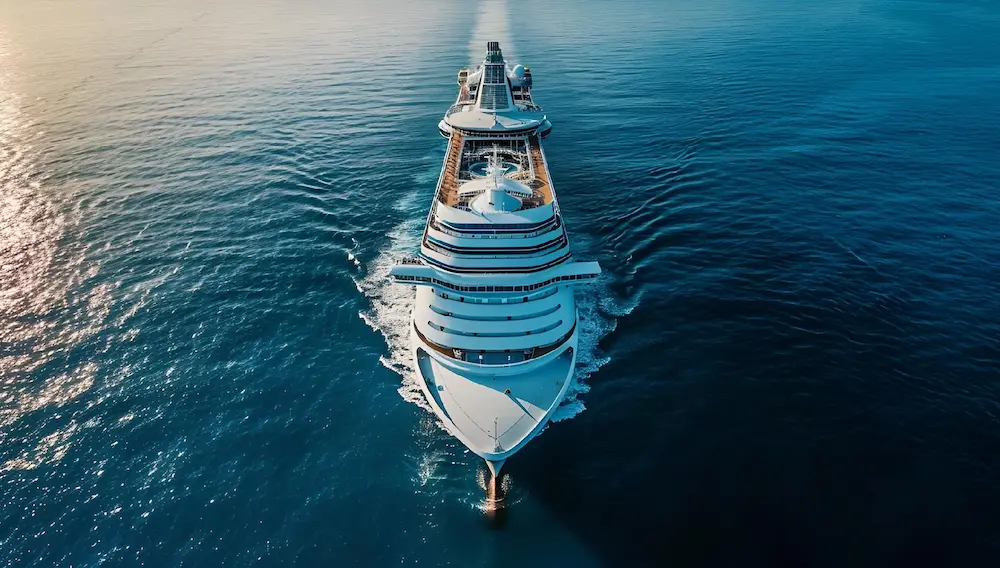When it comes to cruise holidays, there’s still no place like home (or at least close to it) for Aussies. But the lure of distant seas is growing, according to a new Cruise Lines International Association (CLIA) report.
CLIA’s 2024 Source Market Report for Australia has revealed that Aussies’ love affair with cruising isn’t abating, with some 1.32 million Aussies taking to the seas in 2024 – a 5.9% rise on the previous year and almost back to the record-breaking heights of 2018, when 1.35 million Australians cruised.
Furthermore, the new data confirms that close-to-home cruises still dominate by a long way, with more than 1 million Australians sailing around Australia, New Zealand or the South Pacific. That’s equal to four in five cruise holidaymakers.
But despite the allure and the advantages of sailing close to home, there’s another growing trend: fly-cruise bookings to far-flung destinations are on the rise, with 18.5% (four in five) of Aussies now choosing to cruise overseas, up from 15.2% in 2023.

This shows travellers are increasingly willing to invest in cruise holidays that start well beyond our shores, particularly in places like the Mediterranean, Alaska and the Caribbean. Following Australia, NZ and the South Pacific, the most popular cruise regions for Australians in 2024 were the Mediterranean (6.2%), Asia (3.3%), Alaska (2.3%), the Caribbean (1.2), Hawaii and the US West Coast (1.1%), and Northern Europe (1.1%).
Expedition Cruises and Trans-Atlantic & World Cruises accounted for 0.7% and 0.5% of cruise journeys, respectively.
“Australia has long been home to some of the world’s most dedicated cruise fans and the number of Aussie cruisers continues to rise,” CLIA Managing Director in Australasia Joel Katz said.
“More Australians are cruising within our local region and more are cruising in other parts of the world, which highlights why cruising is such a rewarding way to travel.”

At home, cruise tourism remains a major force. According to the report, around 247,000 overseas visitors cruised through Australia, New Zealand, and the South Pacific – a 14% lift on the previous year.
Meanwhile, the average cruise length taken by Australians was 8 days, and the average passenger age stayed steady at 48.4.
Younger travellers continue to make waves too, with a third of Aussie cruisers now aged under 40, the report shows.
When it comes to the leading cruise markets, Aussies continue to punch above their weight per capita, with Australia still the world’s fourth-largest cruise market behind the United States (19.12m), Germany (2.57m) and the United Kingdom (2.34m).
Overall, a record 34.6 million people took an ocean cruise during 2024, nearly double-digit (9.3%) growth on the previous record of 31.7 million in 2023.
Cruising conundrum

While Aussie cruising demand is strong, Katz said more support is needed to ensure long-term growth.
“Australia, New Zealand and the Pacific are incredibly popular cruise destinations, but they are also a challenging environment for cruise lines to operate in, so we need a regional focus on encouraging cruise ship deployment in local waters,” he remarked.
“Demand is strong, but we need governments, destinations and industry stakeholders to work together to address the high costs and regulatory difficulties we experience in the region.
“Cruising supports many thousands of local jobs, but we are going to suffer a decline in cruise ship deployment in this region while other global destinations reap the economic rewards.”
Katz’s statement is backed by another recent CLIA review, the State of the Cruise Industry Report 2025, which revealed that 2024 passenger volume in the Asia and Oceania region was down by 20.8% compared to 2019 – the only region to shrink.
CLIA and the Australian Cruise Association (ACA) research pegged cruising’s economic impact at $8.43 billion for the 2023–24 financial year, supporting over 26,000 jobs.






